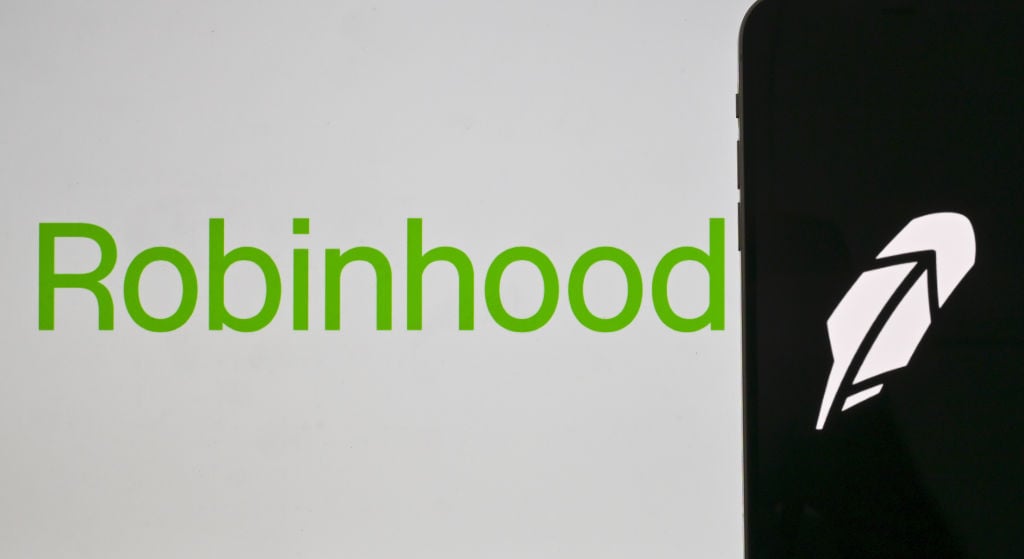It's the go-to stock trading platform for Generation Z, but Robinhood Markets (HOOD 1.35%) has suffered a humbling fall from grace. After receiving praise for its ability to attract first-time investors, questions are mounting about the sustainability of its business model.
The company released its fourth-quarter 2021 earnings results on Jan. 27, and the report confirmed what many investors feared -- Robinhood is seeing an identifiable decline across many parts of its business.
That, combined with increasing regulatory pressure and a recent focus on cryptocurrencies, could mean more losses are coming for the company's stock after it already fell 85% from its all-time high.

Image source: Getty Images.
Trending in the wrong direction
Late 2020 into early 2021 was a bumper period for Robinhood, as the meme-stock frenzy was driven primarily by younger investors, its target demographic. The company experienced soaring growth, with 50% of its customers jumping into the financial markets for the very first time.
To maintain the momentum, Robinhood made a pivot from its stock and options products into cryptocurrencies, as these assets were in high demand from its audience. While this worked for a short period of time, the company has since suffered sequential declines across most of the important financial metrics used to measure its business.
|
Metric |
Q1 2021 |
Q2 2021 |
Q3 2021 |
Q4 2021 |
|---|---|---|---|---|
|
Monthly active users |
17.7 million |
21.3 million |
18.9 million |
17.3 million |
|
Assets under custody |
$81 billion |
$102 billion |
$95 billion |
$98 billion |
|
Average revenue per user |
$137 |
$112 |
$65 |
$64 |
|
Total revenue |
$522 million |
$565 million |
$365 million |
$363 million |
Data source: Robinhood Markets.
In the recent fourth quarter, cryptocurrency trading made up 18% of Robinhood's transaction-based revenue. It's a stark decline from the second quarter, where they comprised over 51%. But this seemed inevitable, since, in that second quarter, 62% of those cryptocurrency transactions were in the meme token Dogecoin (DOGE 2.88%), which suggests Robinhood's customers were making speculative bets rather than sound investments.
Given that Dogecoin has collapsed in price by 81% from its all-time high, many of Robinhood's customers who bought the token have likely suffered catastrophic losses. That's not a great driver of repeat business.
The regulatory storm
Cryptocurrencies are under scrutiny from both financial regulators and the IRS. Proposed new tax laws that could come into effect in 2023 would force cryptocurrency brokers like Robinhood to report their customers' trading activity to the IRS (right now the information is self-reported). It means anybody who sells, exchanges, or spends their crypto tokens would be liable for taxes on their gains.
But regulators like the Securities and Exchange Commission (SEC) could swoop in with even more drastic measures. Right now, brokers like Robinhood are unable to obtain adequate insurance to protect their customers' cryptocurrency holdings, so in the event of a hack, there may be no avoiding a total loss. Since Robinhood holds up to $22 billion worth of tokens for its clients, it's understandable that regulators would seek to enforce new protections for investors.
Regulators are also reviewing the company's controversial payment for order flow (PFOF) revenue model, and its smartphone application's "gamified" features, which are said to encourage risk-taking. PFOF makes up the majority of Robinhood's transaction-based revenue, so any clamp-down on the practice could adversely affect the company.
The risks outweigh the potential rewards
At this stage, it appears the risks to Robinhood's business are far more real than its prospects for growth. After all, the way it generates revenue under the PFOF model is illegal or regulated in most developed economies outside the U.S. That means it might be confined to one market, and it stands to reason Robinhood has reached peak saturation in America, given that its monthly active user figure is trending in reverse right now.
It's concerning that even with elevated trading activity in the markets during 2021, the company still failed to achieve full-year profitability. Therefore, with some of its key financial metrics in decline, investors might hold valid concerns about its ability to generate earnings in the future, too. In fact, analysts expect the company to continue posting losses through 2023.
In light of all this, it's not surprising Robinhood's stock has fallen out of favor among investors. And if it can't fix some of the structural risks facing its business, its 85% collapse is only going to get worse.







